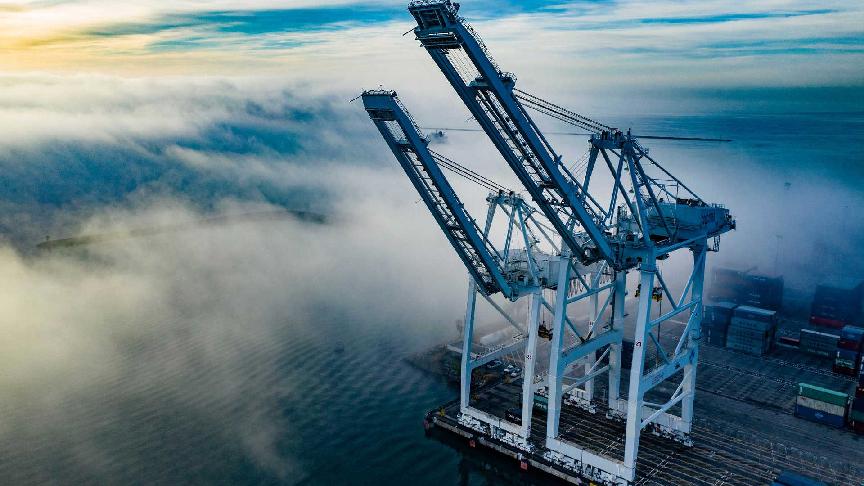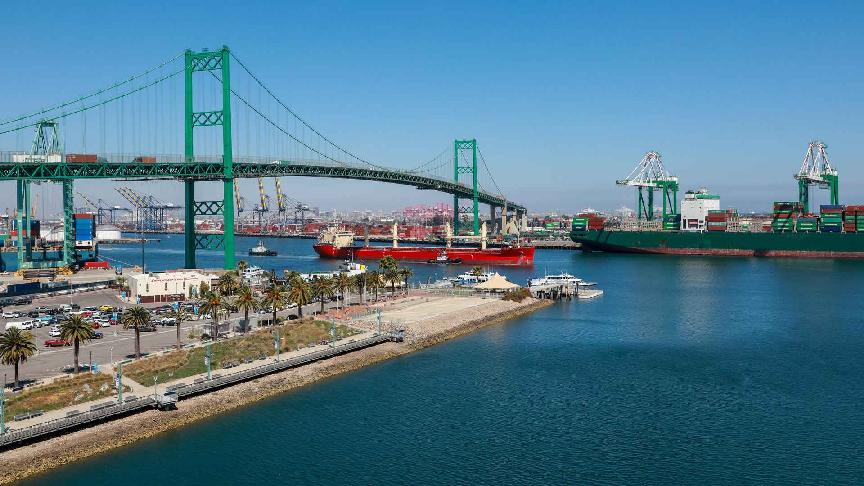US East Coast ports attract more volumes at the expense of the West Coast
The good news is Los Angeles and Long Beach ports are ready to receive 2023 congestion-free

The port complex of New York and New Jersey was again crowned the busiest port in the US in November taking over its West Coast counterpart for the fourth month in a row.
According to a report by G-Captain, the Port of New York and New Jersey handled over 723,000 TEU last month, marking a 4.8% decline year-on-year but a remarkable 20% jump compared to November 2019.
On the other hand, cargo volume remained soft at the Port of Los Angeles in November as it handled 639,344 TEU dropping 21% compared to November 2021.
The cargo shift from the West Coast to the East Coast has created a gap and reshaped the flow of the US supply chain.
One of the main factors driving cargo away from ports in the west is the unresolved labour talks and the AB5 trucking law — which concerns the employment status of drivers.
Paul Brashier, vice president of drayage and intermodal at ITS Logistics, told local media, “The Atlantic Ocean region volumes are high once again, as shippers continue to avoid the West Coast due to the uncertainty of the ILWU contract negotiations.”
“We can’t see these trends changing in 2023 until there’s a resolution on that contract,” he added.
Meanwhile, carriers and port operators have been increasing their investment on the East Coast. The most recent investment was made by French carrier CMA CGM when it announced the acquisition of two “flagship” terminals at the port of New York and New Jersey.
Furthermore, the Ports of Georgia, Virginia and Maryland have been increasing their rail capacity. Virginia Port is also considering the establishment of a second inland port, according to CNBC. “This long-term infrastructure investment is attracting ocean carriers like MSC that have announced plans to build new terminals at the ports of New Orleans and Baltimore,” added the news agency.
On the bright side, the low influx of cargo in Los Angeles/Long Beach ports eliminated congestion and delays at the facility. The container ship backlog outside the port complex was zero last month, down from a record 109 in January. “There is no congestion. Zero. Zip. This gateway is fluid,” Leo Huisman, managing director of the Americas region at APM Terminals, told the Journal of Commerce.
However, in fear of losing market shares, port authorities in Los Angeles, together with state authorities, decided it is pivotal they exert all efforts to restore balance.
“We need to get out and work for every pound of freight,” Port of Los Angeles Executive Director Gene Seroka said. “Just like we collaborated with our partners to clear the backlog, we need a united industry push to demonstrate why L.A. should be our customers’ first choice.”
As for the Gulf Coast, Lloyd's List reported that Houston Port - one of the major ports at the Gulf of Mexico - maintained its growth in November and it is the only major US port where imports increased year on year.
Source: G-Captain, Port of Los Angeles, JOC, Supply Chain Dive, CNBC, Lloyd's List
Related articles

Sea newsCargo surge sends port of Long Beach to record September

Sea newsCMA CGM renames New York terminals

Sea newsMSC and Maersk announce multiple blank sailings prior to China's Golden Week

Sea newsPorts of Los Angeles and Long Beach see mixed cargo volumes in August

Sea newsCMA CGM completes New York terminals deal

Sea newsEast coast pulls ahead in early peak season volumes
